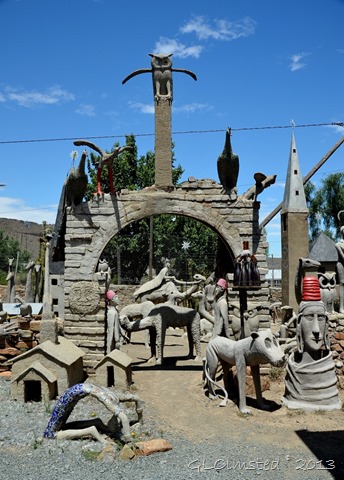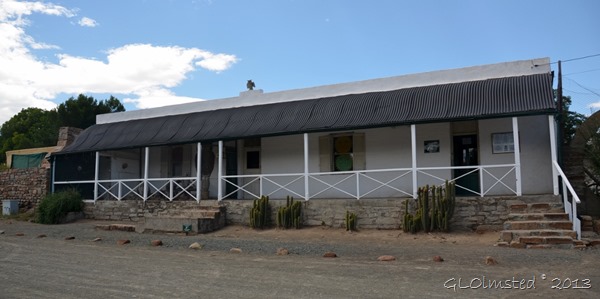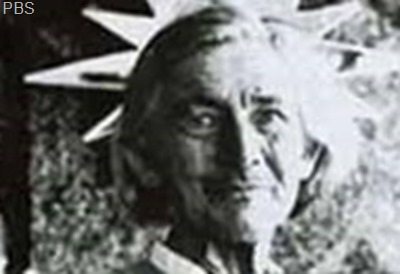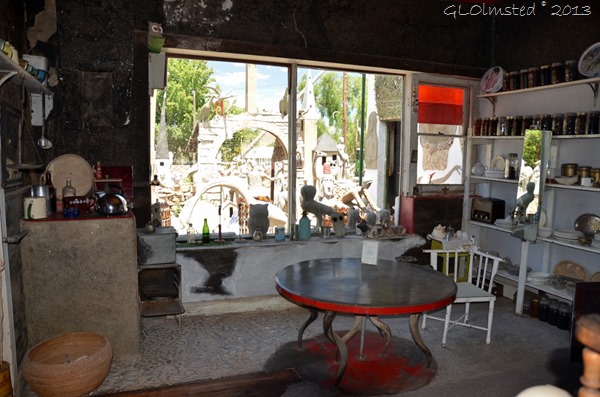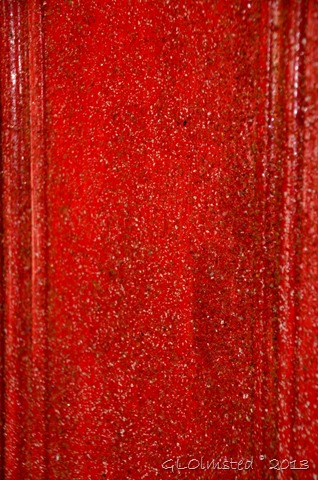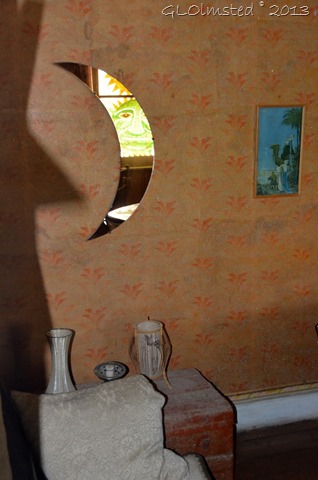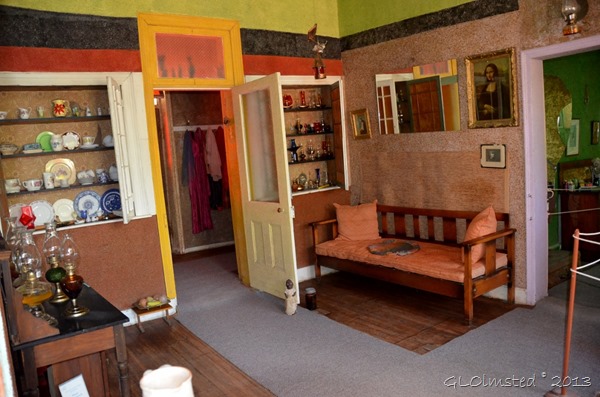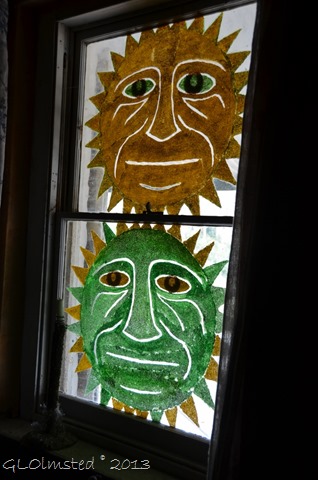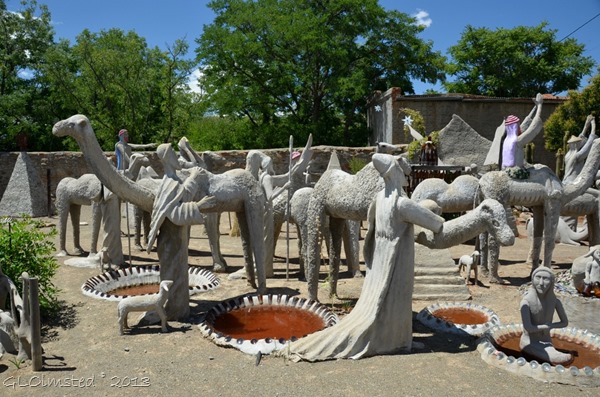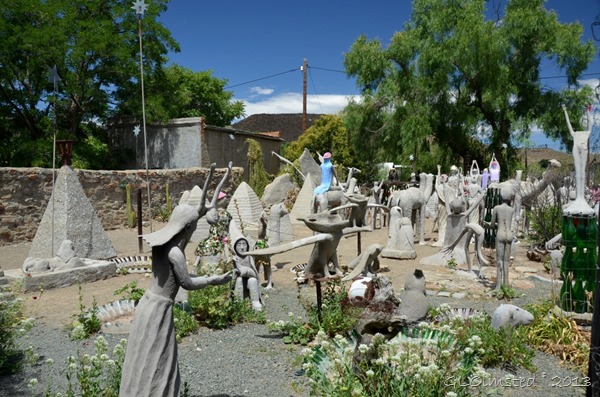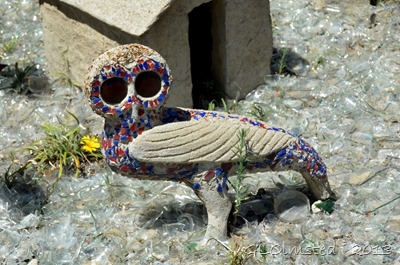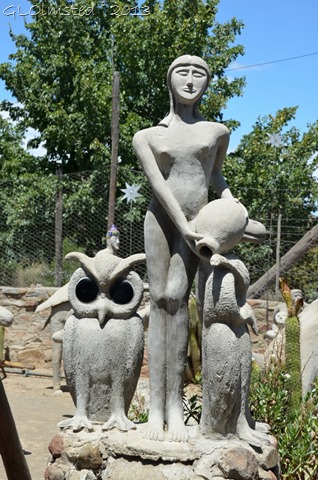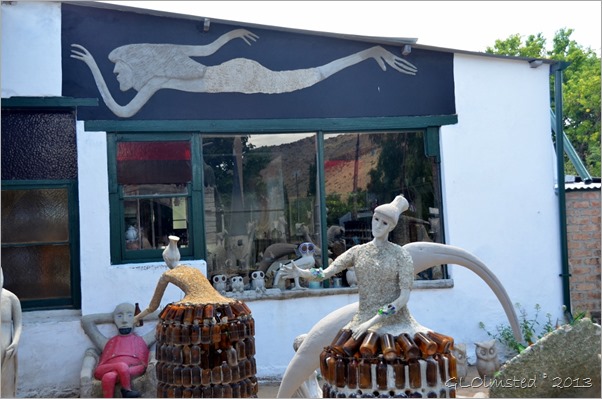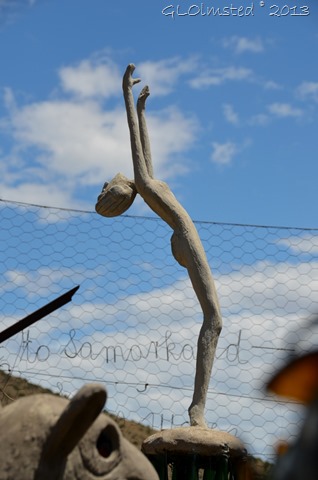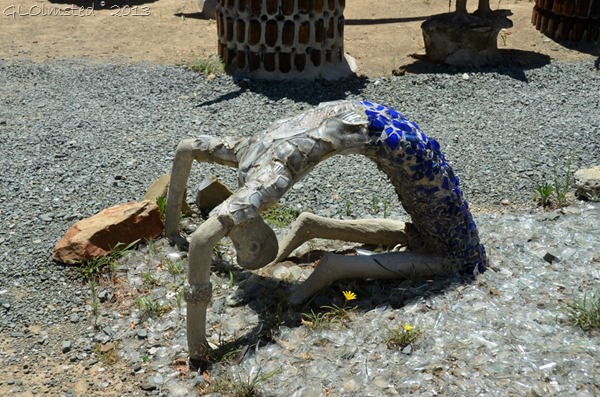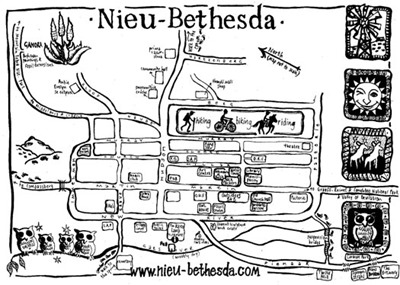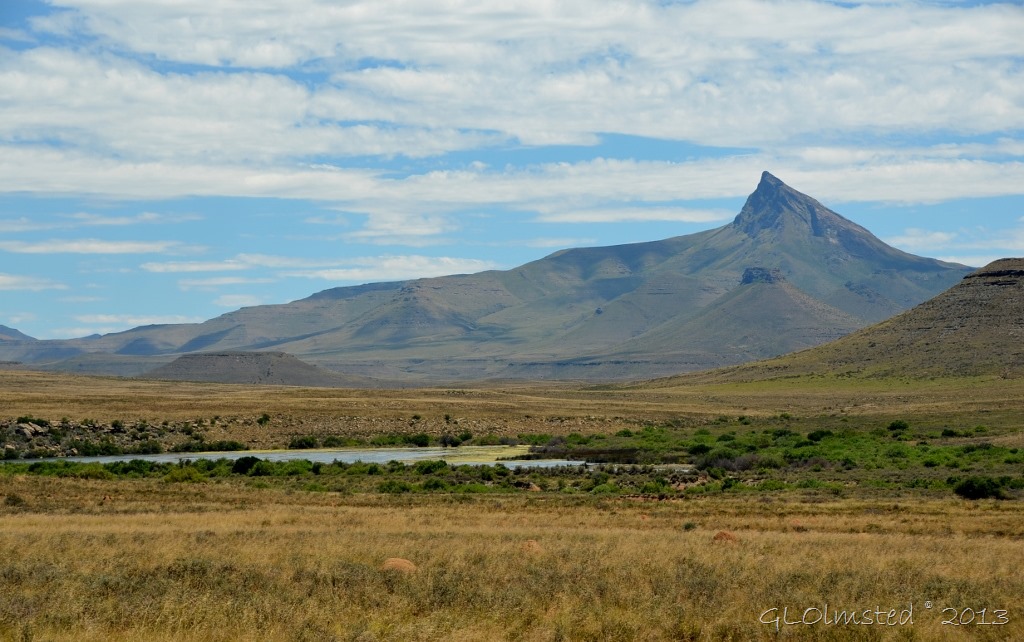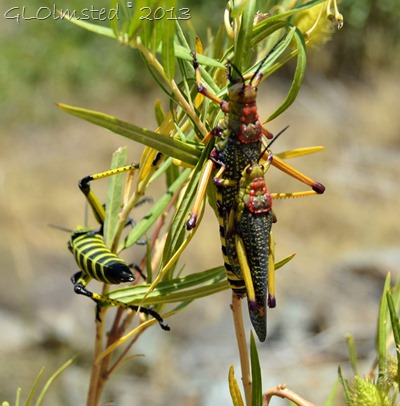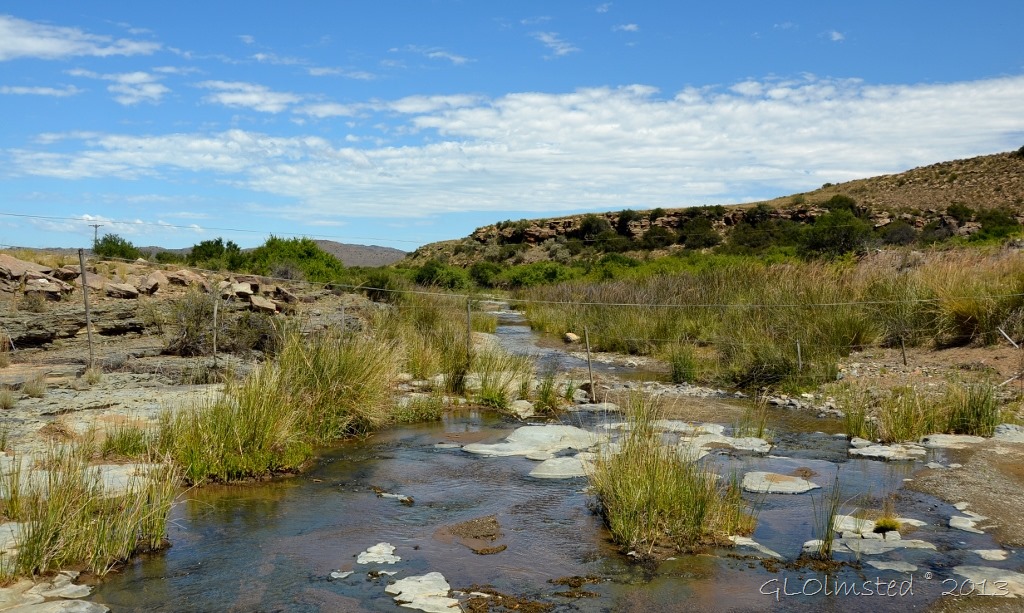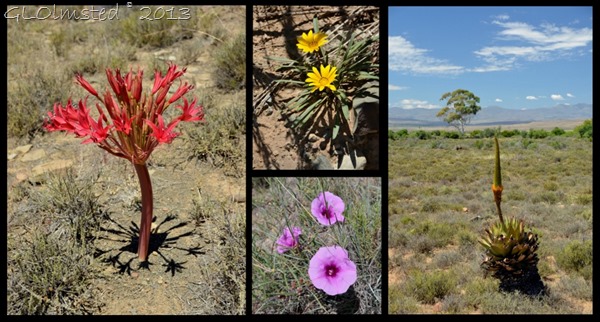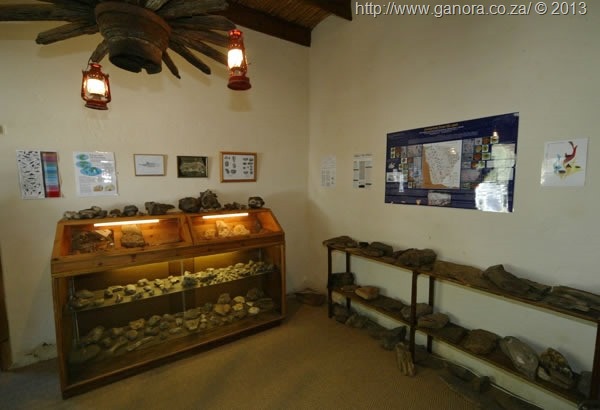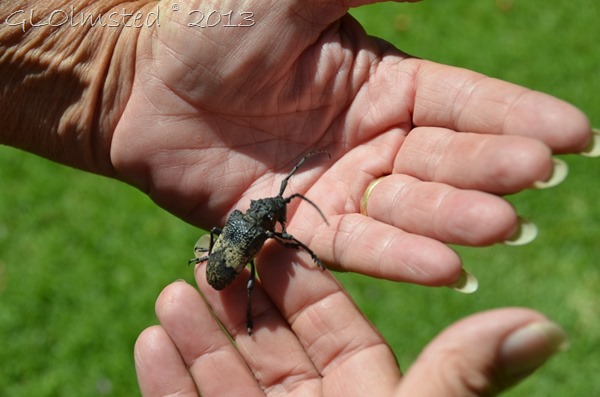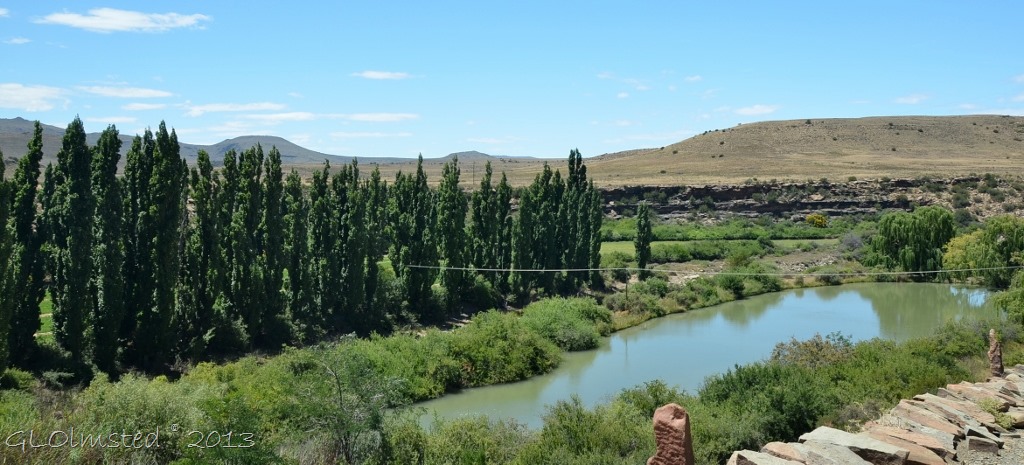Original entrance
I’d read about the Owl House online so it was on my South Africa list but probably would have missed it had there not been a sign for fossils causing a side trip to Nieu-Bethesda. After a stop at Ganora where the owners JP and Hester weren’t home, Joan and I continued down the dusty road to town and the Owl House.
Entered the nondescript looking home into the reception area, a converted bedroom with all walls painted black, paid fee, and then watched a video about Helen and the Owl House.
Who was Helen Martins
Helen Martins was born December 23, 1897 in the small Karoo Community of Nieu-Bethesda. She earned a teaching diploma in Graaff-Reinet in 1919 and a year later married a fellow teacher who also worked as a dramatist so they traveled together appearing in theatrical productions in Cape Town and Port Elizabeth. They divorced in 1926 and two years later Helen returned to Nieu-Bethesda to care for her ailing parents for the next 17 years. She then became increasingly reclusive and isolated from the local community who thought of “Miss Helen” as a strange and rather outlandish character.
A woman with a vision or Bizarre Art
In a state of depression, Helen began to transform her home into a vision of light and color. She hired local workmen to make modifications like replacing original windows with vast panes of glass.
Then she began covering every interior surface with bright paint mixed with colored ground glass. I liked the textured affect but was careful not to brush against the walls.
I really liked the mirrors hung to reflect external light from room to room.
The many lanterns and candles Helen collected took three hours to light and were arranged to bounce light onto the mirrors. I would have liked this lady with the artistic mind.
Koos Malgas the builder
Next she tackled the yard and with the help of Koos Malgas, a local sheepshearer and builder, began her vision of Mecca. Mixing ground glass with cement Malgas turned Helen’s dreams into reality.
There are over 300 sculptures and in the Camel Yard many of the wise men and camels face east, towards a Mecca of sorts. Predominant themes are the nativity, a curious mélange of Christian and Eastern philosophies (particularly the Bible and the writings of Omar Khayyam), as well as a large number of owls. Helen Martins was especially fond of owls and considering them a kind of totem animal.
Malgas converted Helen’s initial ideas, into actual three-dimensional sculptures in the garden. They worked together over the course of twelve years. Every sculpture would be discussed beforehand.
She wanted to build a Mecca before she died. Some of it was built with soda and wine bottles held together with cement. In the camel yard hangs the sign: “This is my world”.
The Owl House, then and now
Shortly before she turned 79, Helen Martins ended her life by drinking caustic soda. Her eyesight was failing so she could no longer enjoy the light and color surrounding her.
After her death, The Owl House fell into decline. Ownership was transferred to the Local Council and financial help was garnered through the Friends of The Owl House and PPC Cement. In 1991, Friends of The Owl House brought Koos Malgas back to Nieu-Bethesda to restore and care for The Camel Yard. The Owl House Foundation was formed in 1996. Today The Foundation, together with the Local Council, administer Martins’ legacy. It had been Helen Martins’ greatest wish that the Owl House and Camel Yard be preserved as a museum. Malgas died in 2000.
The Owl House is open from 8 a.m. to 6 p.m. during the December School holidays and from 9 a.m. to 5 p.m. daily for the rest of the year. An entry fee is charged. The Owl House and The Camel Yard are visited by over 130,000 people annually.
Nieu-Bethesda has no petrol, bank or credit card facilities. Kitching Fossil Centre, accommodations, food and crafts are available in this rural little community.
Helen Elizabeth Martins (‘Miss Helen’) is considered South Africa’s foremost Outsider Artist. Outsider Art was first recognized by the French artist Jean Dubuffet, who coined the term ‘Art Brut’, or Raw Art, and described it as “fantastic, raw, visionary art created by individuals often maladjusted, with no art training, who work outside the mainstream of the art world.”
The Owl House proved to be an interesting highlight on our side trip to Nieu-Bethesda showing an incredible creativity, though a little bizarre and eerie too.

